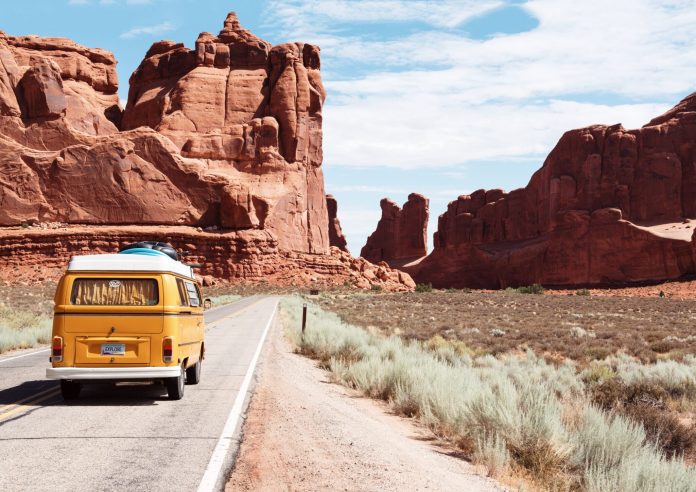This article will go over the Top 5 Things to Do in Zimbabwe. For many years, the threat of political unrest has harmed Zimbabwe’s reputation as a tourist destination. Regardless, the country is in much better shape than it has been in recent years, and tourists are gradually returning. Many of Zimbabwe’s most popular tourist destinations can be found outside of the major cities. As a result, they are regarded as relatively risk-free.
Visitors can expect to see stunning natural scenery as well as unusual wild animals. There are also ancient sites that provide fascinating insights into the continent’s history. The best part is that Zimbabwe’s world-class game and UNESCO World Heritage Sites are still relatively uncrowded, giving the impression that the country has vanished.
The top five things to do in Zimbabwe are as follows.
Hwange National Park
Hwange National Park, near the Botswana border in western Zimbabwe, is the country’s oldest and largest video game book. It has an area of 5,655 square miles/14,650 square kilometers. In addition, there are over a hundred animal species, including the Huge 5. It is famous for its elephants. The Hwange elephant population is thought to be one of the world’s largest. Furthermore, the African safari, which includes some of the world’s most endangered animals.
Both the black rhinoceros and the brown hyena are critically endangered. In the park, over 400 different bird species have been videotaped. The lodging options in Hwange National Park range from premium lodges in their own exclusive areas to rustic camps that offer the opportunity to spend the night under canvas in the heart of the African bush. If you need to go somewhere right now, Keep in mind that the world is changing if you need to go somewhere right now. So, travel the world and book a flight to Zimbabwe or any other country like Seychelles. Live your best life right now
The Victoria Falls
Zimbabwe’s western border with Zambia is formed by the Zambezi River. Victoria Falls is 354 feet/108 meters tall and 5,604 feet/1,708 meters wide. This is the world’s largest sheet of falling water and one of the seven natural wonders of the world. During peak flooding season, rushing water spray can be seen from 30 miles/48 kilometers away (February to May).
Mosi-oa-Tunya, which translates as “The Smoke That Barks,” is the indigenous name for these incredible drops. A path winds along the canyon’s edge on the Zimbabwean side. Perspectives provide views of the falling water and rainbows suspended over the chasm. The spray coats the skin while making a loud noise. Any will be forgotten in any case. Take a look at the American Airlines Name Change as well.
The Zambezi River flows directly into Lake Kariba, which is located northeast of Victoria Falls on the Zambian border. Lake Kariba, created in 1959 by the Kariba Dam, is the world’s largest artificial lake by volume. It stretches for more than 140 miles/220 kilometers and has a maximum width of 25 miles/40 kilometers.
Houseboats are the most common mode of transportation, despite the fact that the lake’s shores are lined with lodges. Kariba is well-known for being one of the best places on Earth to catch tiger fish, a vicious freshwater species prized by sport anglers for its endurance and perseverance. The lake’s islands also provide a plethora of opportunities for computer gaming. Matusadona National Park, located on Kariba’s southern shore, is one of the best places to see wildlife.
National Forest of Mana Pools
Mana Pools National Forest in northern Zimbabwe is regarded as one of the best all-natural areas in the country. Because of the incredible concentration of wild animals such as elephants, buffalo, leopards, and cheetahs, it was designated a UNESCO World Heritage Site. Mana Pools is also a haven for aquatic wildlife, with thriving hippo and Nile crocodile populations.
They stay in the four Zambezi River pools until the river turns north. The longest is approximately 3.7 miles/6 kilometers long and can supply water even when completely dry. This park is also popular among birders due to its abundance of water. The importance of location cannot be overstated.
Bulawayo
If you want to experience metropolitan culture, go to Bulawayo, Zimbabwe’s second-largest city (after the resources, Harare). Ndebele king Lobhengula founded it in the mid-nineteenth century. Throughout the Matebele Battle, the British South Africa Company maintained control of the city. As a result, much of the city’s current design can be traced back to the colonial era. Walking through the streets is, in a nutshell, like stepping back in time.
The Nature Gallery, which houses taxidermied safari pets, is one of Bulawayo’s most popular attractions. A dodo egg and a primitive coelacanth fish are among the unusual discoveries. Visitors can see live African animals at the Chipangali Widlife Orphanage, which is located a short drive southeast of the city. In Bulawayo’s eccentric history, the Center Ages replica Nesbitt Castle serves as a shop hotel.
The National Monolith of Zimbabwe
Zimbabwe is awe-inspiring. National Monolith is located four hours from Harare and eight hours from Bulawayo. UNESCO has designated yet another World Heritage Site. The site protects the ruins of Zimbabwe’s former capital, Fantastic Zimbabwe. In addition, the most significant rock ruins south of the Sahara. The 11th to 15th century ruins include a hillside acropolis where kings and principals used to stay.
The valley is littered with ruins from previous settlements. They were all made of granite obstructs that had been whittled down to the point where no mortar was needed to keep them together. Arab coins and Chinese porcelain discovered along the Eastern African coast suggest that Great Zimbabwe was once a prosperous and efficient trading center.





